Tag: Paul Noyes
-

Noyes Land, Barton County, Missouri
We can see on this map land of brothers Ray Noyes and Paul Noyes, sons of James Allen Noyes, adjoining land of Orrin Ellie Harmon in Barton County, Missouri. James Allen Noyes moved to Barton County during the infancy of Liberal, Missouri.
-
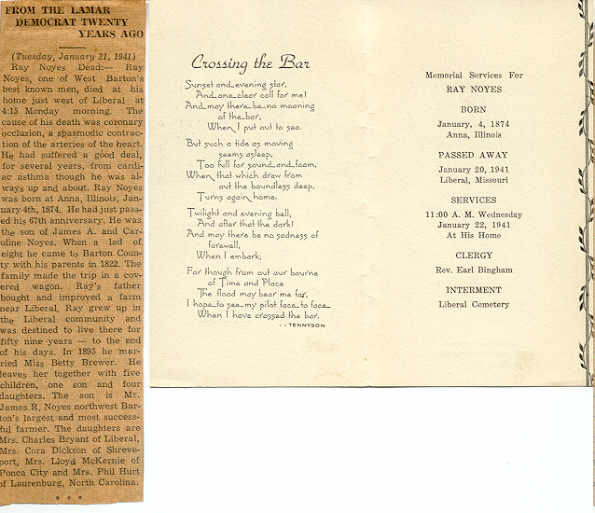
Ray Noyes’ Obituaries
Ray Noyes, husband of Elizabeth Jane “Bettie” Brewer, was the son of James Allen Noyes and Caroline Atwell Noyes. He lived in Liberal, Missouri. Ray is of our line. LAMAR DEMOCRAT obituary (Tuesday, January 21, 1941) for Ray NOYES reads: “Ray Noyes dead–Ray NOYES, one of West Barton’s best known men, died at his home…
-
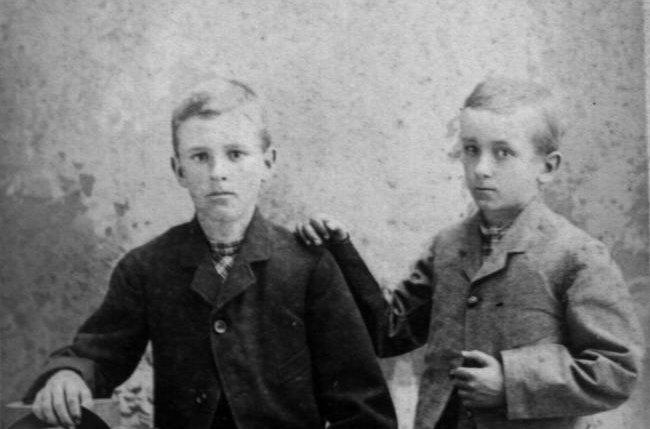
Paul and Ray Noyes
Paul, b. 1869, and Ray, b. 1874, were two of four sons of James Allen Noyes and Caroline Atwell Noyes. The family moved from Illinois to the freethought community of Liberal, Barton County, Missouri in 1882. Ray was about 8 at the time and Paul about 13. Allen would have been about 15 and Victor…
-

1892 Oct 17, Letter from Ray Noyes to Caroline Atwell Noyes
A letter from Ray Noyes of Liberal, Missouri to his mother Caroline Atwell Noyes. Paul and Edna Stark had married on June 8 1891 and their daughter Grace was born March of 1892. Paul and his family stayed in Miller, Oklahoma in 1892/93 in preparation for the land run of 1893. I don’t know where…
-

June 6th, Ray Noyes letter to Bettie Noyes
Dated with a month and day but no year, I have vacillated back and forth on whether this letter from Ray to Bettie Noyes would have been written during Bettie’s 1902 June visit with the family of Allan Noyes (a brother of Ray) in Oklahoma. Bettie’s first letter to Ray (at least the first of…
-

Edna Stark Noyes Letter to Bettie Noyes, April 13 1897
Below is a letter from Edna Stark (b. 1872) wife of Paul Noyes (b. 1869) to Elizabeth “Bettie” Brewer Noyes (b. 1877), wife of Ray Noyes (b. 1874), a brother of Paul’s. The letter shows that at the time they were living in Whiterock, Oklahoma. The baby picture that Edna mentions as having received from…
-
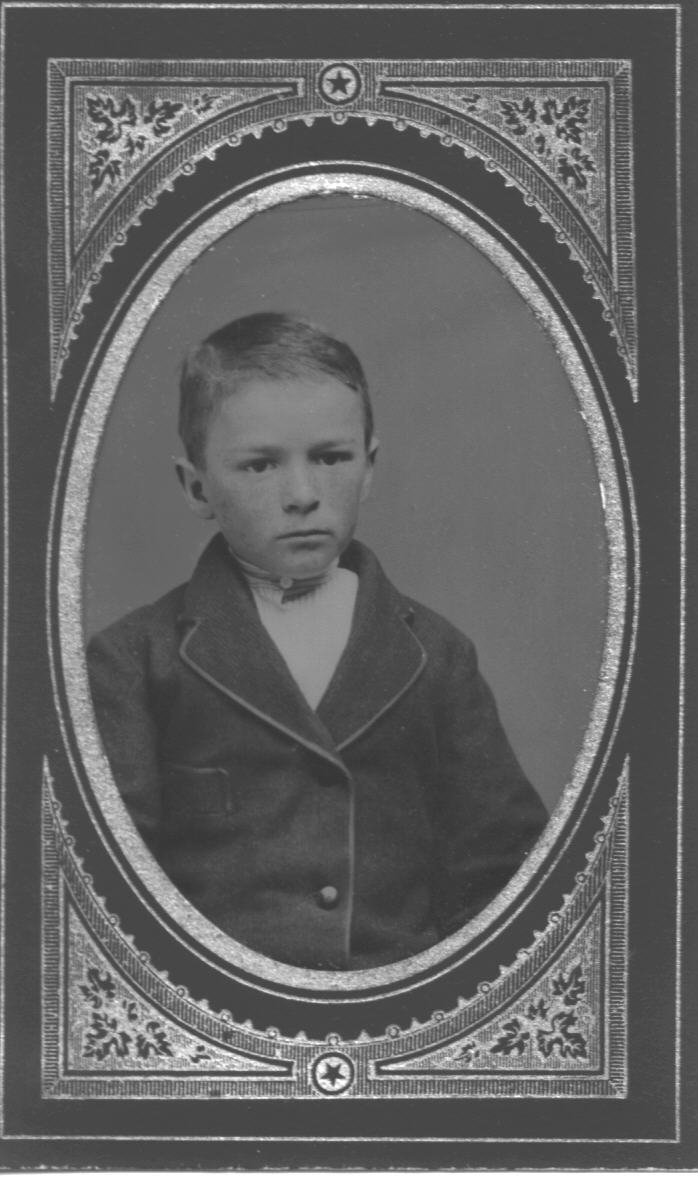
Paul Noyes Photo
Paul Noyes Original image courtesy of Nancy Benton Paul, son of James Allen Noyes and Caroline Atwell, was born 24 Nov. 1869 at “10 oclock AM” in Anna, Union Co. IL, and died 3 May 1931 at Humansville, Polk Co., MO. He married Edna STARK on June 8 1891 at Liberal, Missouri. Their three children…
-
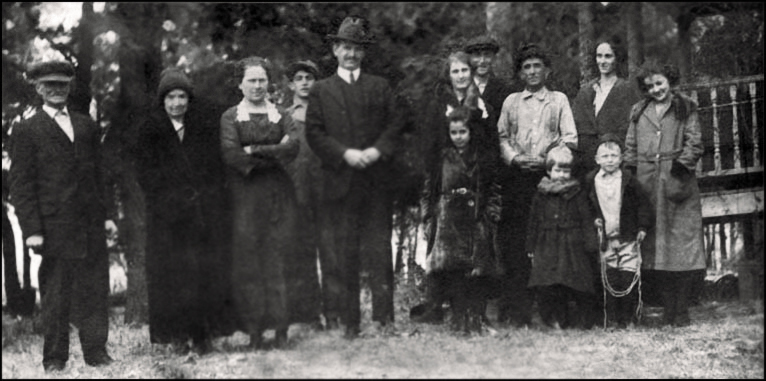
Ray Noyes Family Photo circa 1921-1922
This photo, circa 1921-1922, would be from Liberal, Missouri. Nancy Benton supplied the following identification. From left to right: O.E. Harmon; Viola Harmon; Edna Noyes; Jamie Noyes; Paul Noyes; Charles Bryant–Bettie Noyes in front of him and Mary Lou Noyes in front of Bettie; Ray Noyes with Lena Minor in front of him; Pansy Noyes…
-
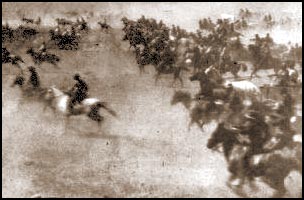
GRACE NOYES PINKERTON ON THE CHEROKEE LAND RUN of 1893 MADE BY HER FATHER PAUL NOYES AND UNCLE ALLEN NOYES
GRACE NOYES PINKERTON ON THE CHEROKEE LAND RUN of 1893 MADE BY HER FATHER PAUL NOYES AND UNCLE ALLEN NOYES The great romance of American pioneering is much richer than history makes it. The intimate annals of family experiences and personal adventures provide the countless dramas with which American progress is associated. Thrilling stories and…
-
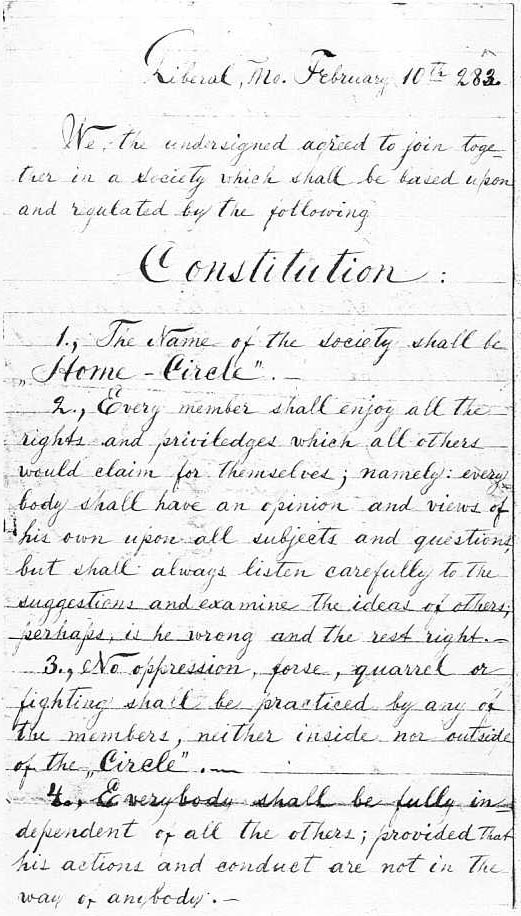
Noyes Family Constitution
Being Free-thinkers who had been associated with socialist experiments and who had moved to Liberal, Missouri, which was expressly for liberals, it’s not surprising that the Noyes family would form their own family constitution. The document displays the year as being 283. The Dictionary of Missouri Biography notes that Liberal was utilizing a different dating…